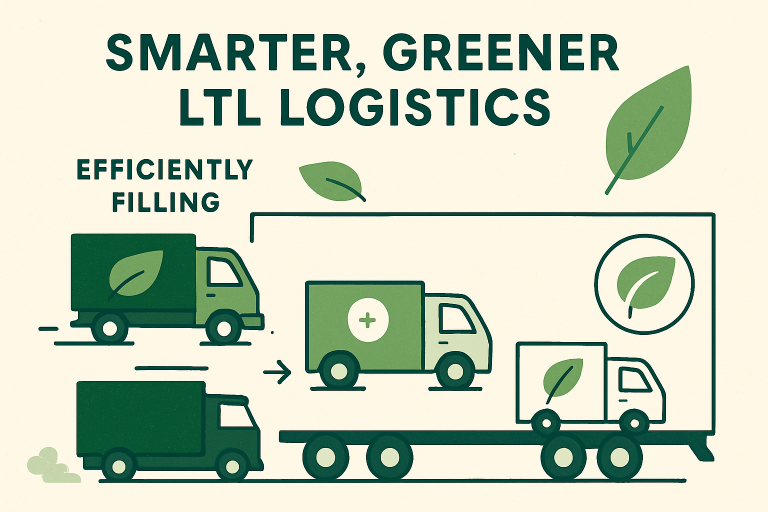
Less-than-truckload (LTL) shipping has become an essential solution for businesses that need to efficiently move smaller quantities of goods. Companies can share space with other shipments instead of paying for an entire truck, reducing costs while maintaining flexibility. This approach is especially valuable for industries that rely on frequent deliveries or operate with fluctuating order sizes, allowing them to optimize supply chains without unnecessary expense.
Understanding the pricing structure is a key factor when considering this shipping method. Since carriers combine multiple shipments, costs are influenced by weight, dimensions, and distance traveled. Keeping an eye on LTL freight rates helps businesses plan budgets more effectively and make informed decisions about shipping options. By doing so, companies can balance affordability, speed, and reliability in their logistics strategies.
Leveraging Technology in LTL Logistics
Cutting-edge technology transforms LTL freight shipping from manual, paperwork-heavy operations into streamlined, smart logistics networks. Automation and AI across the supply chain optimize routes and provide real-time tracking, demand forecasting, and capacity planning. Automated platforms coordinate loads, manage bookings, and update routes quickly, reducing human error and increasing cost efficiency. These systems decrease delays, while AI insights help react to disruptions and recommend efficient routes based on traffic, weather, and capacity constraints. They offer live package updates, reducing uncertainty and risks of loss or delay. GPS tracking provides visibility at every point, enabling quick responses to issues and keeping operations on track.
Sustainable Supply Chains: Green LTL Initiatives
Environmental sustainability is becoming essential in logistics. LTL providers invest in eco-friendly vehicles like electric trucks, explore hydrogen fuel, and expand biodiesel use to cut emissions and meet climate goals. Driven by regulations and customer demand, many shippers now assess partners by environmental efforts, making green credentials key. Green transport helps companies comply with rules, satisfy consumers, and reduce carbon footprints.
Beyond vehicle tech, firms optimize networks by consolidating loads, reducing empty miles, and leveraging data analytics to boost efficiency. This lowers fuel use and emissions, supporting sustainability while maintaining operations as more companies seek eco-friendly supply chains, industry innovation accelerates, guiding toward a greener logistics future.
E-Commerce, Last-Mile, and Customer Expectations
The rise of e-commerce has increased expectations for fast, flexible shipping, making immediate and same-day deliveries standard instead of premium. LTL carriers are expanding urban micro-fulfillment centers and innovating last-mile strategies to meet shorter delivery windows. Closer proximity to customers reduces lead times, streamlines parcel delivery, and increases daily volume, ensuring timely delivery even as order sizes shrink. Enhanced tracking and communication provide transparency and reliability to meet online shoppers’ standards. LTL’s adaptability also efficiently handles seasonal and promotional surges, helping online retailers stay agile and competitive in demanding markets.
Dynamic Pricing and Smarter Freight Management
Dynamic pricing models transform how businesses handle shipping costs by leveraging real-time data on demand, market trends, and capacity. LTL providers offer flexible freight rates that reflect current conditions, helping companies choose cost-effective shipping times, optimize schedules, and avoid extra charges. This flexibility allows supply chain managers to budget accurately, adapt to peak seasons, and improve logistics planning. Not only do companies save money, but they can also respond proactively to market shifts. Better forecasting enables informed decisions balancing cost, speed, and reliability. The future of LTL freight managementinvolves using these tools to create a transparent, adaptable environment that maximizes value and reduces risk for all businesses.
Conclusion: Building Resilient Supply Chains
Integrating LTL freight into supply chains enhances resilience, cost control, and adaptability in a volatile market—companies utilizing LTL benefit from process and tech advancements to achieve cost, sustainability, and service goals. Embracing technology and sustainability helps firms connect efficiently with customers and partners while protecting profits. A flexible supply chain is essential as e-commerce grows and dynamic pricing spreads. Those adopting these innovations will find logistics more streamlined and sustainable, thriving through market disruptions and setting new standards for value and transparency.